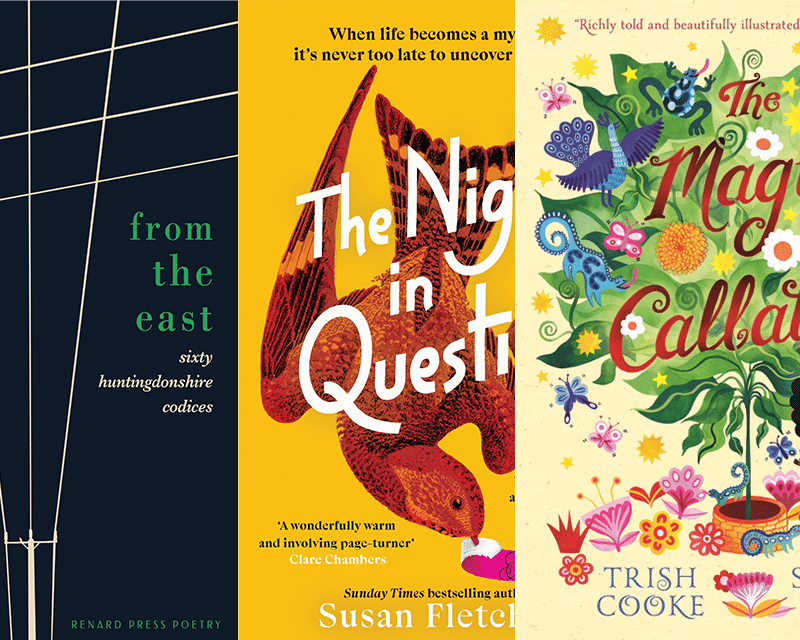- Collected
- Article
Chambers Of Inspiration
The rooms that haunt historical novelists

- 4 April, 2016
- Clare Colvin
It is one of the mysterious processes of writing fiction that a particular image will lodge at the back of the mind while a thousand others slip away. The image may remain virtually dormant for years until one day something happens that illuminates the reason why it is there. When writing my novel Masque of the Gonzagas the epiphanic image was a hidden chamber in the Renaissance palace of the Dukes of Mantua — part of the Appartamento dei Nani, a succession of tiny low-ceilinged rooms approached by steep stairs that, I was told, one of the Dukes of Mantua had built especially for his dwarfs.
Mantua is almost encircled by water, and the sprawling ducal palace – a virtual town within the city – was expanded over the centuries by successive counts, marquises and dukes during their rise up the aristocratic pecking order. The Appartamento dei Nani was one of the later additions. This suite of miniature rooms was said to have been built by the fourth duke, Vincenzo Gonzaga, who died in 1612. I found the idea of the Duke’s dwarf-friendly apartment beguiling — and then I discovered that Vincenzo was not only the patron of a theatrical troupe of dwarfs but also of Rubens, the poet Torquato Tasso and Claudio Monteverdi, the genius of early opera.
For historical novelists, the initial idea or image that takes them back through the centuries often seems to concern a place. Buildings, in particular, carry their history within their structure, and they bring a sense of the past into the present. Around the time I began writing my novel, Rose Tremain discovered her chamber of inspiration too. Her historical novel Music and Silence, set in the court of King Christian IV of Denmark around 1630, and my Masque of the Gonzagas, set in the Gonzaga court of Mantua during the 1600s, were published within weeks of each other in the autumn of 1999. Both novels dealt with the problematic relationship between musicians and their patrons. Both were initially inspired by the image of a chamber that lodged itself insidiously in the mind.
Tremain had been on a British Council tour to Copenhagen and chose to visit Helsingør (known in English as Elsinore) on an afternoon off, prompted by its connection with Hamlet. On the way there, as she told me when I interviewed her for the Independent, she saw ‘an amazing castle rising out of the mist on the lake.’ The castle, Kronborg, was largely the work of Christian IV. While she was touring it, her hosts described a legend attached to Frederiksborg, the castle where Christian was born, and which he also rebuilt. Christian IV was a man of strange moods and whims. At Frederiksborg, she was told, he devised a cellar where his orchestra would play, the music rising from the unseen players through ducts to the chamber above the cellar. When he tired of a cantata the king would kick the trap door shut.
The image of the powerful man in the lighted room and the musicians left in the dark as the door slammed fascinated Tremain, and it lay at the heart of her novel. At its start, she describes the arrival of the new English lutenist Peter Claire, who discovers that the orchestra is incarcerated in a freezing cellar that also houses the king’s wine.
For Deborah Moggach, author of Tulip Fever – a ‘love-letter to Dutch painting and that lost world of serene and dreamy domestic interiors’, as she put it – the inspiring chamber came at one remove, from a painting. She had bought the work of a minor Dutch artist at an auction. Dated 1660, it depicted a young woman in her bedchamber, getting ready to go out. From the wall of the Moggach living room, the woman gazed out of the enclosed interior with an enigmatic expression, silent with her secrets. Moggach’s interest in the world of Dutch interiors led her to research the tulip mania that gripped Holland during the 1630s. The frenzy of escalating prices for the bulbs was followed by an almighty crash as the bubble burst. It seemed an apt symbol of human greed, and relevant to the present.
The most haunting literary chamber, however, is surely the one that gave rise to Daphne du Maurier’s The King’s General. Du Maurier lived in Cornwall for many years at Menabilly, the seat of the Rashleigh family. The house was to become famous as the fictional Manderley, from Rebecca, but it had fascinated Du Maurier since she first saw it, aged 20, in 1927. She was especially intrigued by the tale of a skeleton discovered in a bricked-up room in 1824, when builders demolished a buttress during the course of reconstruction.
Du Maurier explained in a postscript to The King’s General that the workmen ‘came upon a stair, leading to a small room, or cell, at the base of the buttress. Here they found the skeleton of a young man, seated on a stool, a trencher at his feet, and the skeleton was dressed in the clothes of a Cavalier, as worn during the period of the Civil War.’ The owner of Menabilly at the time, William Rashleigh, ordered the remains to be buried with due reverence and had the secret room bricked up. Consulting family records, Rashleigh had learned that certain members of the Grenville family of Stowe in Cornwall had sought sanctuary from the Parliamentarian forces during the Civil War, and surmised that one of them had taken refuge in the secret room.
Du Maurier’s novel was published in 1946, three years after she and her husband moved to Menabilly. The heroine of her novel was a woman who had lived through the tumult of the English Civil War, Honor Harris. She had died in 1653 and was buried in a church near Menabilly. Daphne du Maurier noticed her memorial stone and remembered its significant date. The lost chamber and the name on the grave combined to inspire the novel.
The inspirational image occasionally turns out to be based on a wrong premise. Rose Tremain discovered later that the musicians’ cellar was actually at a third castle, Rosenborg, which the king had built for his consort, Kirsten Munk. When I eventually visited Mantua, I found that the purpose of the Appartamento dei Nani had been reassessed. An Italian art historian, Renato Berzaghi, had convincingly demonstrated that the stairway and tiny rooms were an exact reproduction of the ancient Scala Sancta, the ‘holy stairway’ near the basilica of St John Lateran in Rome. Berzaghi argued that the Mantuan apartment was used for devotional purposes by Duke Vincenzo’s second son, Duke Ferdinando, when he was a Cardinal. The low ceilings were not designed for dwarfs but to force him onto his knees in supplication as he shuffled through the diminishing set of rooms.
This revised evidence of Gonzaga eccentricity did not prevent me from giving the celebrated dwarfs their own apartment, regardless of scholarship. The siege of the city in 1629–30, during the Mantuan War of Succession, brought ruin to the Gonzagas, and much of the palace lay unused thereafter. So I moved my (now ageing) fictional chief dwarf Archimedeo and his daughter from the Appartamento dei Nani to the more spacious Camera degli Sposi, the ‘Bridal Chamber.’ There, Andrea Mantegna’s fifteenth-century wall-paintings include a dwarf among the princely company — an ancestor of whom Archimedeo would have been proud. It seemed, in the circumstances, a commendable use of artistic licence. The image of a real, historical chamber may provide the seed of inspiration. But a historical novelist is not obliged to imprison her characters within it.
You might also like:
No facts, only versions
Memoirs are as much about what is excluded as what is included. This edition examines how you can evoke the…
RLF Fellows’ News: April 2024
Publishing News RLF Fellow Trish Cooke’s new children’s book, The Magic Callaloo, is set to be published by Walker Books…
Susan Fletcher on outsiders in fiction – literal and imagined
I’ve always known that I’ve preferred to be outside. To be an outsider – literally, and, specifically, amongst wild places…


